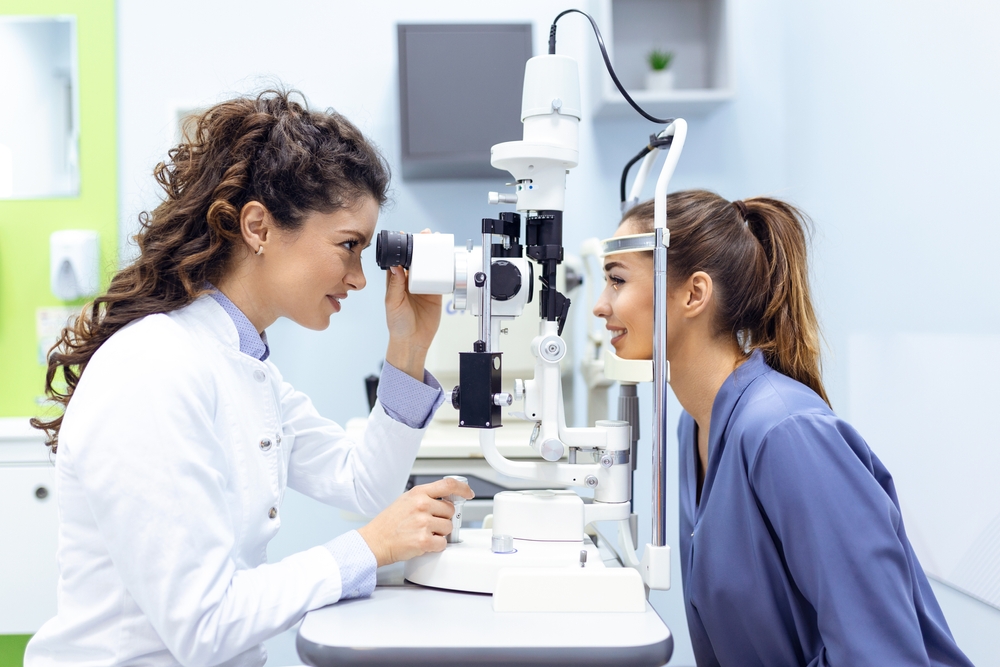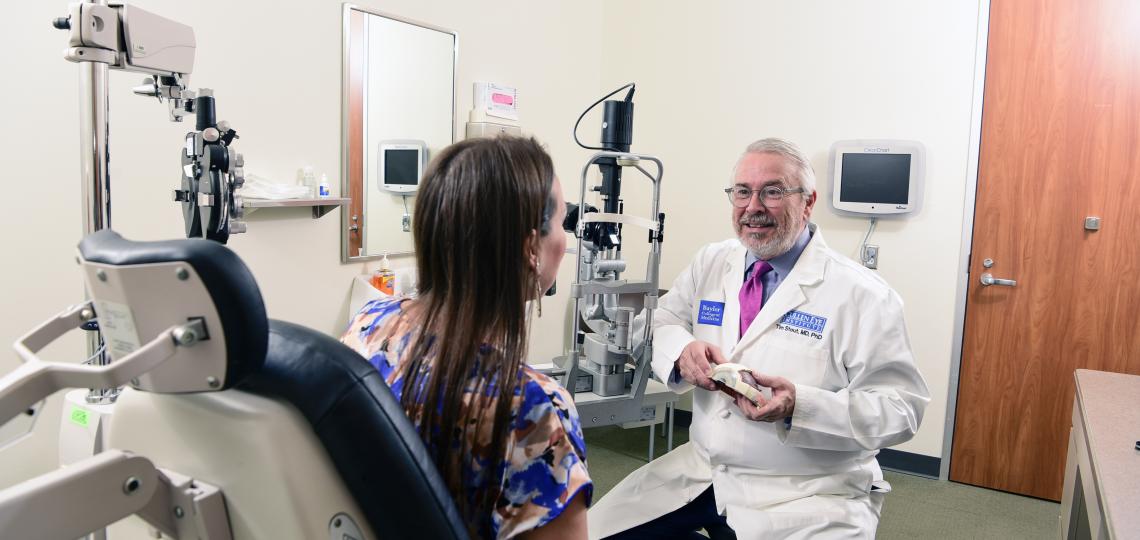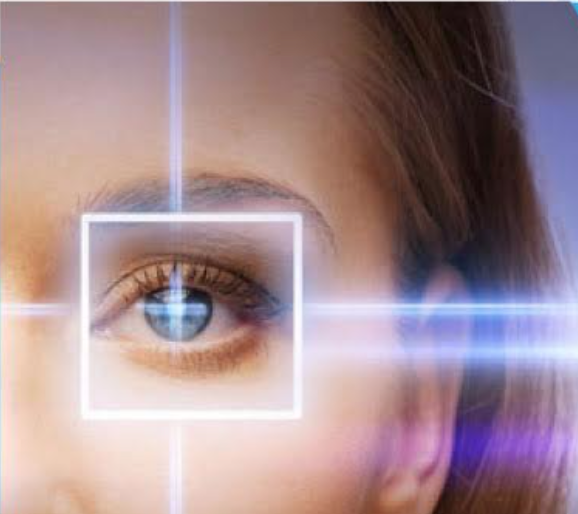Exploring the State-of-the-Art Technologies Made Use Of for Detecting and Treating Eye Conditions
In the world of ophthalmology, the development of technology has actually substantially enhanced the devices offered for diagnosing and dealing with various eye problems. From advanced imaging modern technologies that supply detailed understandings into eye structures to robotic-assisted operations that use exceptional accuracy, the landscape of eye care is frequently progressing. With the integration of man-made knowledge in diagnostics, gene treatment developments, and digital truth recovery, the possibilities for boosting individual outcomes are broadening at a quick pace. The merging of these advanced modern technologies holds the guarantee of changing the field of ophthalmology, supplying new opportunities for individualized and effective treatments.

Advanced Imaging Technologies
Advanced Imaging Technologies have changed the field of ophthalmology by giving accurate and thorough visualization of the eye structures. Optical Comprehensibility Tomography (OCT) stands out as a crucial technology in this realm. OCT utilizes light waves to catch high-resolution cross-sectional photos of the retina, permitting the recognition of minute structural modifications. This non-invasive method help in the early detection and surveillance of different eye conditions such as macular degeneration, diabetic person retinopathy, and glaucoma.
Furthermore, Fundus Photography is another vital device in ocular imaging. This strategy entails recording detailed photos of the back of the eye, including the retina and optic disc. Fundus Photography assists in documenting the development of eye conditions, evaluating treatment efficacy, and educating patients about their eye health.

Robotic-Assisted Operation
Robotic-assisted operations have actually substantially progressed the abilities of sensory surgical procedure, introducing a brand-new period of accuracy and effectiveness in dealing with different eye conditions. By integrating robotic innovation into operations, ophthalmologists can achieve exceptional precision and control, bring about boosted individual results.
One of the primary benefits of robotic-assisted surgical procedure in ophthalmology is the boosted mastery and stability it offers to surgeons. The robot arms can do accurate movements with a high degree of precision, permitting delicate treatments with very little invasiveness. This level of precision is specifically helpful in surgical procedures including the retina, where even small mistakes can have significant effects for a client's vision.
Moreover, robotic-assisted medical systems provide real-time imaging and feedback to the doctor, allowing them to make informed choices during the treatment. This innovation improves the specialist's situational awareness and enables adjustments to be made without delay, making sure optimum outcomes for the person.
Artificial Knowledge in Diagnostics
With the evolution of innovative modern technologies enhancing surgical precision in ocular treatments, the integration of Expert system in diagnostics has become a critical advancement changing the area of eye care. Artificial Intelligence (AI) algorithms are being significantly utilized to examine complicated information from imaging innovations like optical comprehensibility tomography (OCT) and fundus photography to aid in the early discovery and precise diagnosis of various eye conditions. These AI systems can effectively identify patterns and abnormalities in photos that might not be discernible to the human eye, enabling quicker medical diagnosis and therapy planning.
AI algorithms can also predict disease progression, advise tailored treatment plans, and analyze the efficiency of treatments. By streamlining the analysis procedure, AI not just boosts the efficiency of eye treatment experts yet also boosts individual outcomes by making it possible for timely treatments. As AI remains to development, its function in diagnostics is expected to increase, offering new possibilities for early intervention and individualized therapy in the area of ophthalmology.
Genetics Treatment Advancements
In the world of ophthalmic improvements, current strides in genetics therapy innovations have actually sparked significant interest amongst researchers and healthcare experts alike. Gene therapy holds tremendous pledge in reinventing the therapy of numerous eye problems by targeting the hidden hereditary reasons. By presenting hereditary material into cells to make up for irregular genes or to offer an absent gene, genetics treatment offers a personalized method to attending to acquired eye disorders such as retinitis pigmentosa, Leber genetic amaurosis, and others that were previously considered untreatable.

As study in genetics therapy continues to advancement, the potential for customized treatments for a bigger series of eye conditions grows, providing brand-new expect people with genetic eye diseases.
Online Fact Rehabilitation
Online reality rehab has arised as a cutting-edge technique in improving the recovery and recovery processes for people with different aesthetic disabilities. retina service near me. By mimicing real-world settings via immersive modern technology, virtual fact offers a special platform for vision treatment and rehabilitation. This cutting-edge method makes it possible for people to take part in interactive exercises and tasks developed to boost aesthetic acuity, depth understanding, eye coordination, and general aesthetic performance
One secret advantage of look at this now digital reality rehabilitation is its ability to customize therapy programs based on the certain demands and abilities of each patient. Via real-time comments and tracking, health care professionals can track development, readjust treatments, and supply individualized care to enhance results. Additionally, online reality technology can develop a controlled and safe space for people to practice visual jobs, conquer difficulties, and construct confidence in an online setup before transitioning to real-world situations.
Final Thought
In final thought, the innovations in imaging innovations, robotic-assisted surgeries, man-made knowledge diagnostics, genetics treatment developments, and virtual fact rehab have considerably enhanced the diagnosis and therapy of eye problems. cataract care service. These state-of-the-art technologies have actually transformed the area of ophthalmology, permitting more accurate and efficient treatments. As modern technology continues to evolve, the future of eye care looks promising with the potential for a lot more innovative remedies to boost patient results
In the realm of ophthalmology, the advancement of innovation has actually significantly enhanced the tools offered for identifying and treating various eye conditions. Fundus Photography assists in documenting the progression of eye illness, examining treatment effectiveness, and informing clients concerning their eye wellness.
Artificial Intelligence (AI) algorithms are being progressively utilized to analyze complicated data from imaging modern technologies like optical comprehensibility tomography (OCT) and fundus photography to help in the very early discovery and accurate diagnosis of various eye conditions.In final thought, the developments in imaging technologies, robotic-assisted surgical procedures, artificial knowledge diagnostics, genetics therapy innovations, and digital reality rehabilitation have actually substantially enhanced the diagnosis and therapy of eye problems. As innovation continues to advance, the future of eye care looks encouraging with the capacity for even more innovative options to enhance client results.